
As you celebrate National Wildlife Day, envision how your garden can become a perfect home for local wildlife. Choosing native plants is a great way to support insects, birds, and other creatures, making your yard a lively and colorful place. Imagine a buzzing pollinator garden filled with bees and butterflies, or a calm bird bath inviting birds to splash around. Every design choice you make adds to a habitat that helps different species thrive. How will you use your creativity to make your garden welcoming for our furry and feathered friends?
Creating a wildlife-friendly garden is a fun way to connect with nature. By planting native flowers and setting up bird baths, you’ll invite many creatures to visit. Ready to learn simple ideas for your garden that celebrate our wild neighbors? Join us as we explore how to make your outdoor space a cozy home for wildlife!
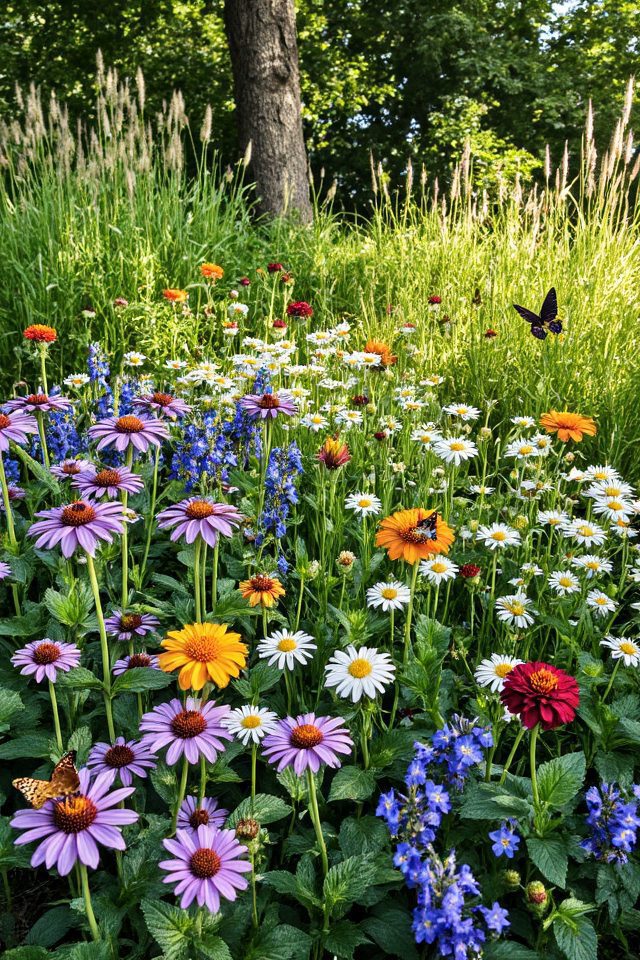
Choosing native plants for your garden is an essential step toward promoting biodiversity.
Native plants are adapted to the local climate and soil conditions, requiring less water and maintenance than non-natives. They provide important habitats and food sources for local wildlife, including birds, butterflies, and beneficial insects.
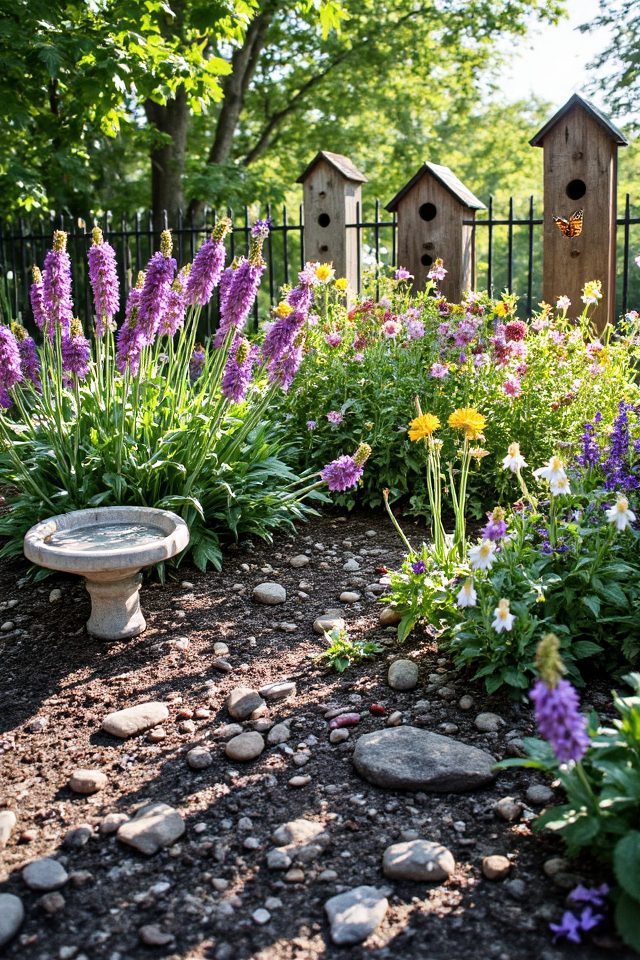
Creating a pollinator garden is an excellent way to support local wildlife while beautifying your outdoor space.
To attract bees, butterflies, and other pollinators, plant a diverse array of native flowers that bloom at different times throughout the growing season. Incorporate plants like coneflowers, milkweed, and lavender to provide food sources.
Additionally, include features like shallow water sources and nesting habitats to create a welcoming environment.
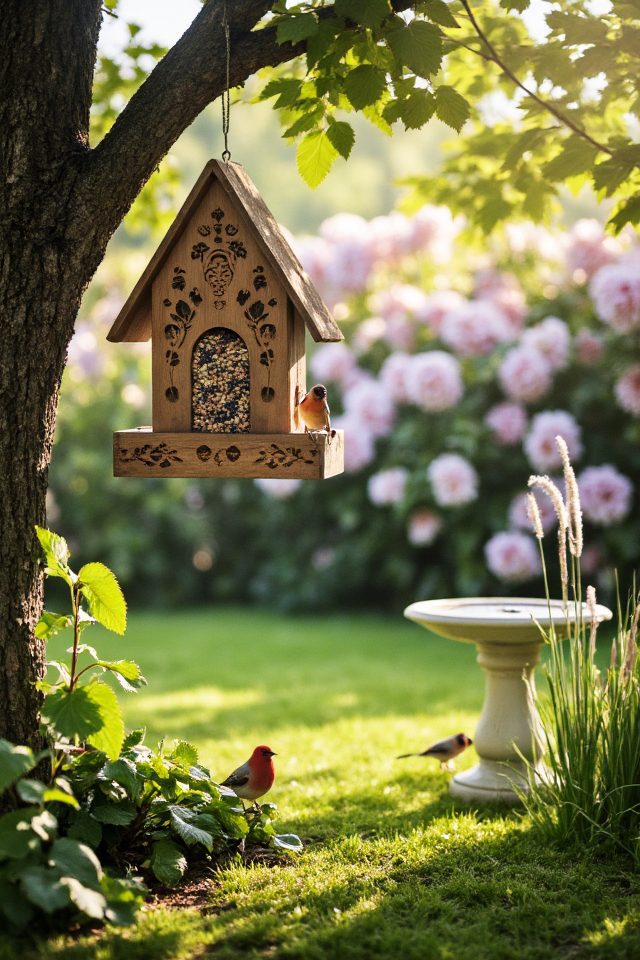
Installing a bird feeder is a delightful way to attract a variety of bird species to your garden, enhancing its significance and beauty.
Choose a feeder that suits the local bird population—whether tube, platform, or hummingbird feeders. Fill it with appropriate seeds, such as sunflower or thistle, to entice specific birds.
Position the feeder in a sheltered location near trees or shrubs for safety from predators.
Enjoy the vibrant display and soothing sounds of nature as feathered friends visit your garden.
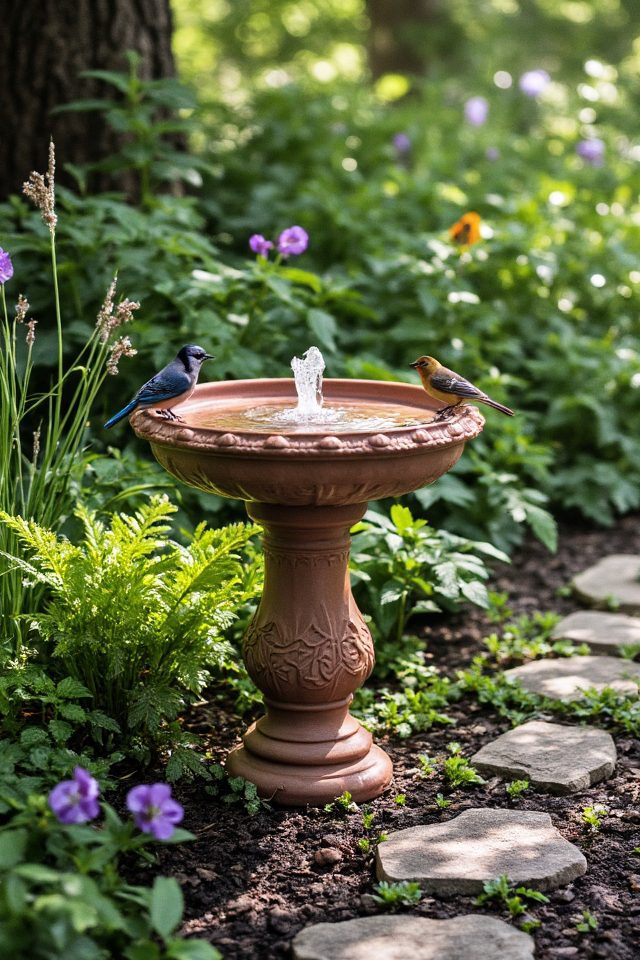
Adding a bird bath to your garden is an excellent way to attract a variety of feathered friends while promoting wildlife conservation.
Bird baths provide birds with essential water for drinking and bathing, which is critical for their health and well-being. Choose a shallow basin in a sunny spot, surrounded by plants for shelter.
To enhance the experience, consider adding decorative stones or a small fountain for movement, which will entice birds and add a soothing ambiance to your garden.
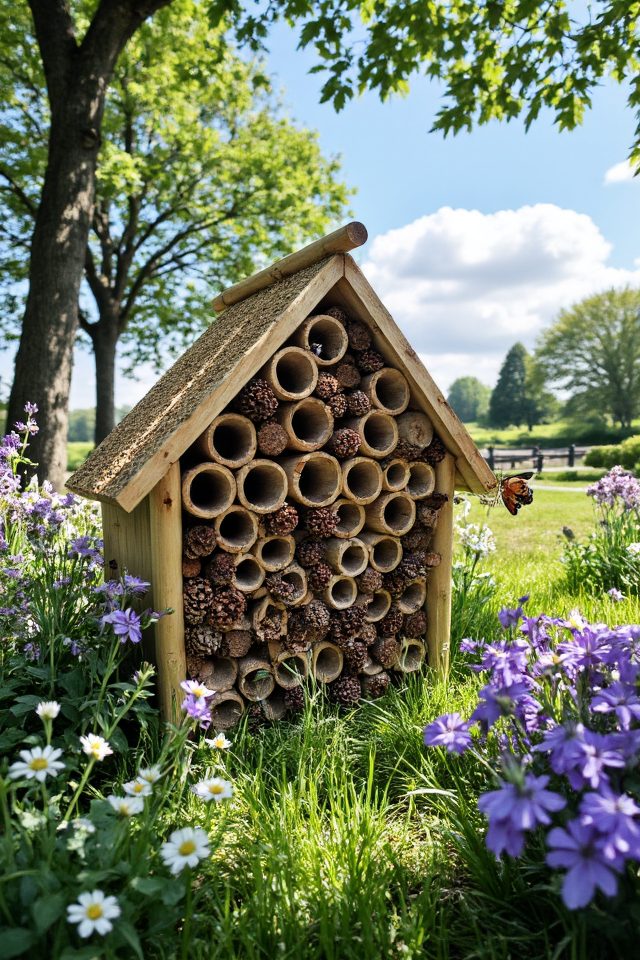
Building an insect hotel is a fantastic way to support local wildlife and create a vibrant garden ecosystem.
These structures provide shelter for beneficial insects like bees, ladybugs, and butterflies, which are essential for pollination and pest control. You can create an insect hotel using natural materials such as bamboo, pine cones, and wood scraps.
Place it in a sunny spot in your garden, and watch as it becomes a buzzing hub of activity, enhancing your garden’s biodiversity.
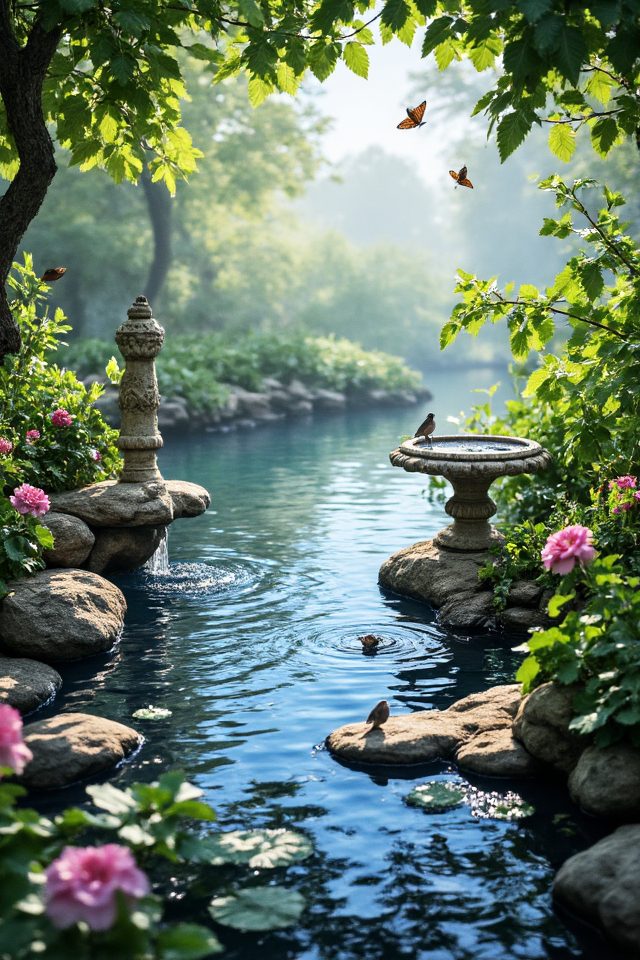
Incorporating water features into your garden is a fantastic way to attract wildlife and create a serene oasis.
Consider adding a small pond, birdbath, or fountain, which provide essential hydration for birds, butterflies, and other creatures. These features not only enhance the beauty of your garden but also create a soothing soundscape, helping to foster a tranquil environment.
Choose native plants around the water to further support local wildlife and promote biodiversity.
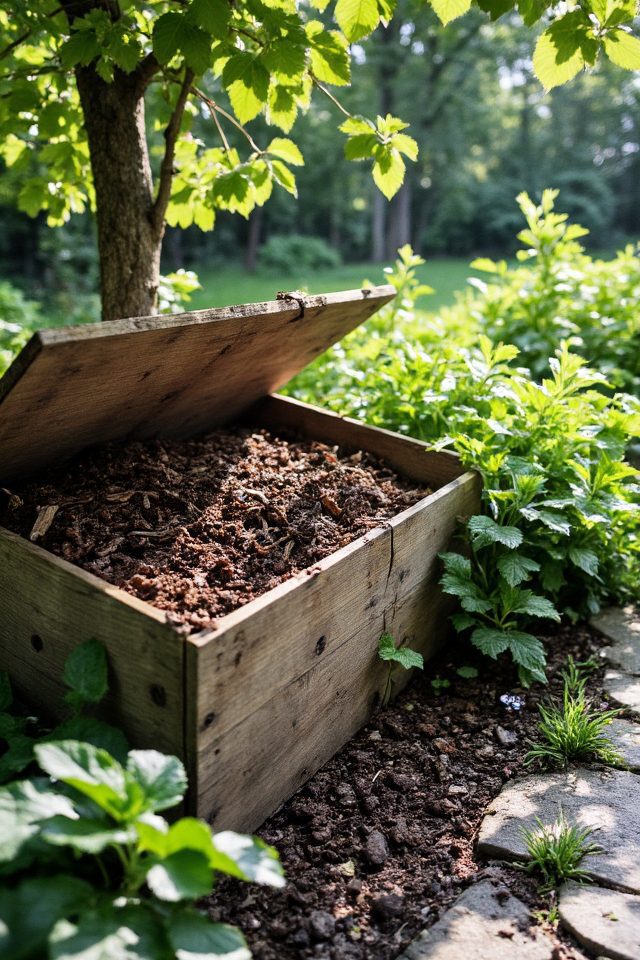
Setting up a compost bin is a fantastic way to contribute to wildlife conservation while enhancing your garden.
Composting allows you to recycle organic waste, like kitchen scraps and yard debris, creating rich, nutrient-dense soil that benefits plants and nurtures local ecosystems. By attracting beneficial organisms such as earthworms and insects, compost helps improve soil structure and fertility, promoting a healthy garden environment.
Plus, it reduces landfill waste and lowers greenhouse gas emissions, making it a win-win for both your garden and the planet.
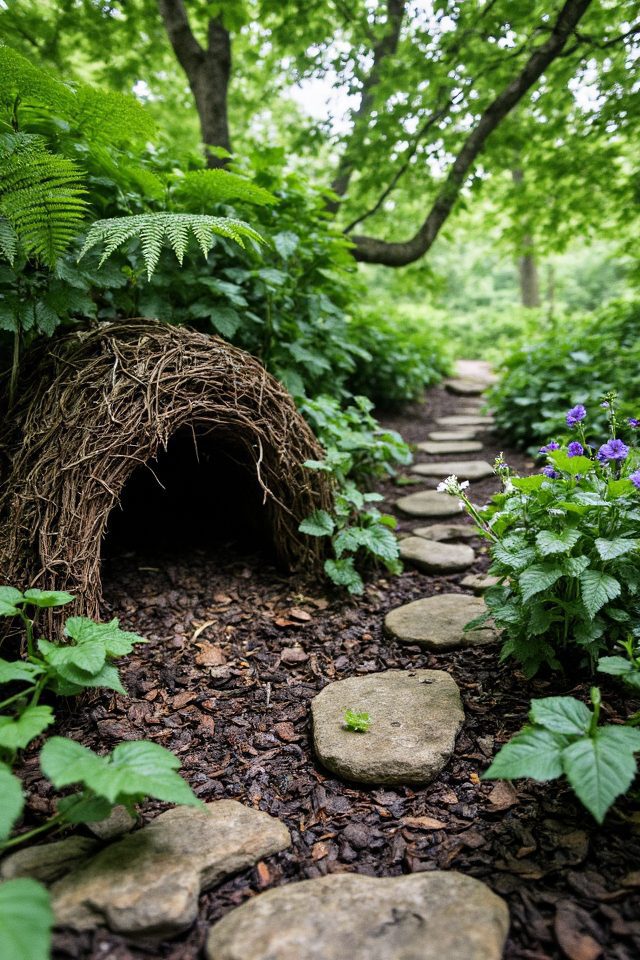
Creating a toad abode in your garden is a delightful way to support local wildlife while adding charm to your outdoor space.
To design an inviting home for toads, select a shady spot and use natural materials like stones, logs, or broken pottery. Confirm there’s an entrance hole and fill the area with damp mulch or leaves for moisture.
This cozy hideout will provide toads with shelter from predators, as well as a habitat for catching insects, making your garden a thriving ecosystem.
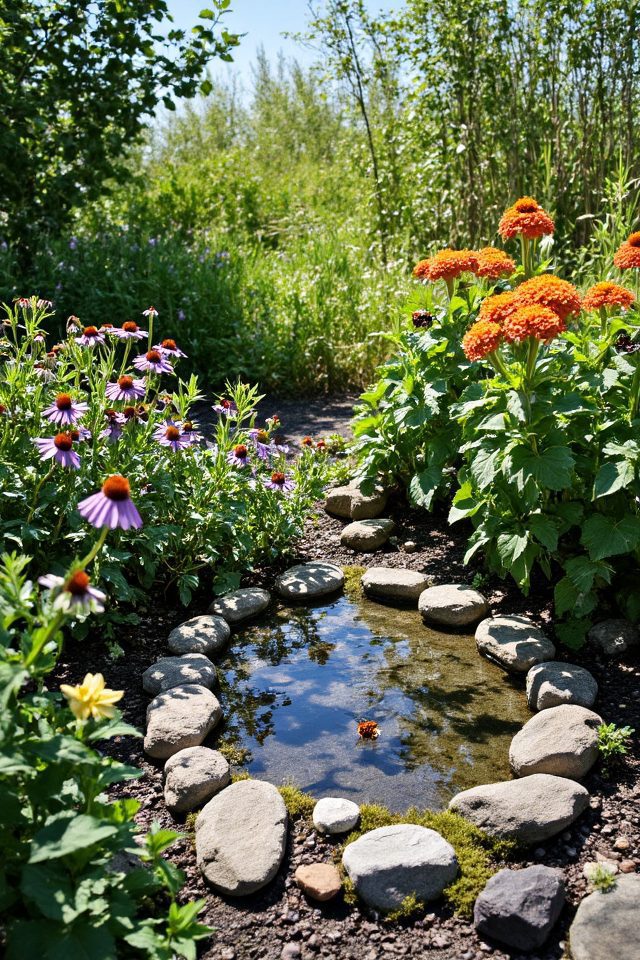
Creating a butterfly garden is a delightful way to celebrate National Wildlife Day while supporting local ecosystems.
Choose native flowering plants like milkweed, coneflower, and lantana to attract a variety of butterfly species. Incorporate elements such as a water source, flat stones for basking, and sheltering shrubs.
Avoid pesticides to provide a safe habitat, and enjoy the beauty and motion of butterflies as they flit around your vibrant garden oasis.
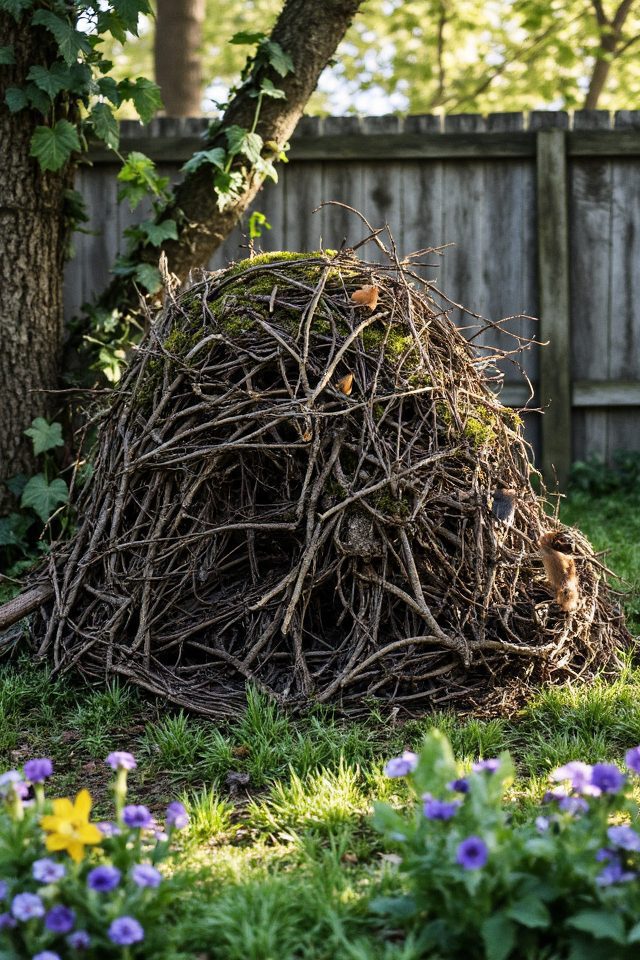
Creating shelter with brush piles is a fantastic way to support wildlife in your garden.
By stacking branches, leaves, and other organic materials in a designated area, you can provide essential habitats for a variety of species such as birds, small mammals, and beneficial insects.
These natural shelters offer protection from predators, harsh weather conditions, and serve as a nesting site.
Additionally, brush piles encourage decomposition, enriching the soil and promoting a thriving ecosystem in your garden.
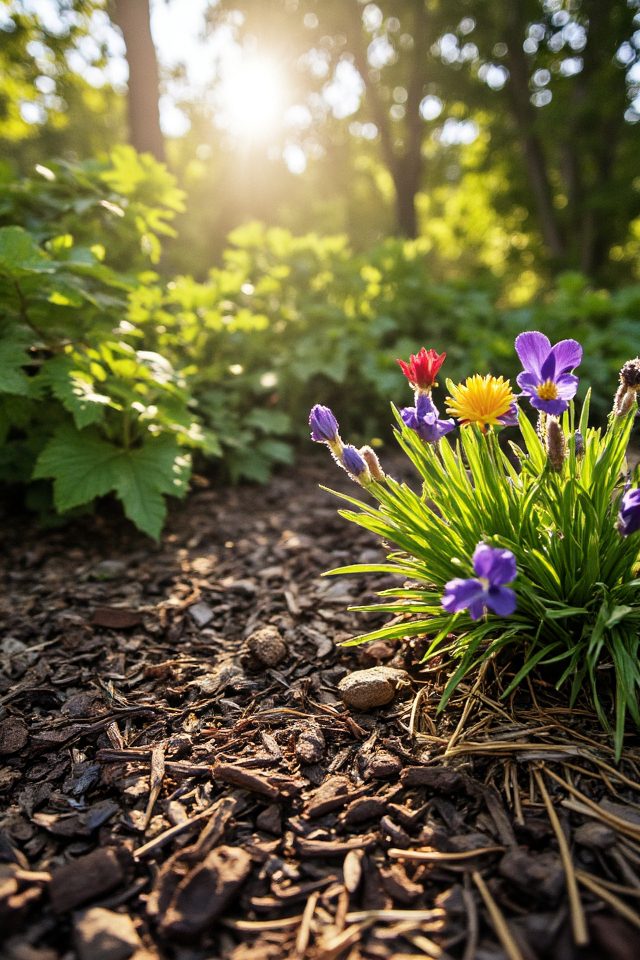
Using natural mulch in your garden is an excellent way to enhance both aesthetics and wildlife habitats.
Mulch made from organic materials like wood chips, straw, or pine needles not only suppresses weeds but also retains soil moisture and improves nutrient content as it decomposes.
Additionally, it provides shelter for beneficial insects and small animals, encouraging a thriving ecosystem.
Opting for natural mulch aligns your garden with National Wildlife Day by promoting biodiversity and sustainability.

Creating a meadow area in your garden offers a beautiful and sustainable space that supports wildlife.
Choose native wildflowers and grasses that attract pollinators like bees and butterflies. This natural habitat not only adds vibrant colors and textures but also provides essential food sources and shelter for various birds and insects.
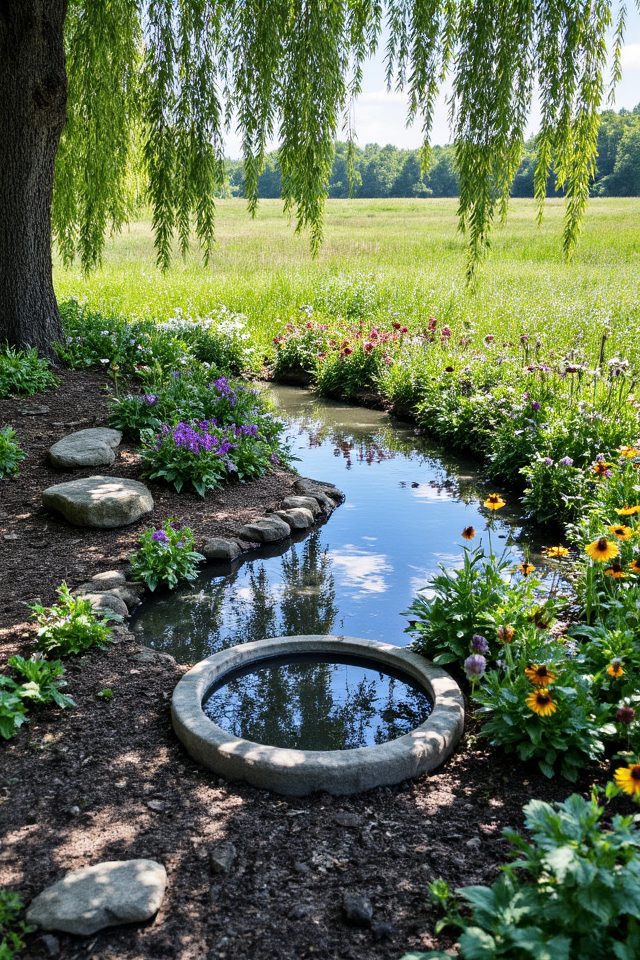
Implementing rain gardens is a fantastic way to celebrate National Wildlife Day while promoting sustainability. These gardens capture and absorb rainwater runoff, which reduces erosion and improves water quality.
By incorporating native plants, you create a habitat that attracts beneficial insects, birds, and other wildlife. A rain garden not only beautifies your landscape but also helps manage stormwater, contributing to the health of local ecosystems.
It’s a perfect project for eco-conscious gardeners.

Including edible plants in your garden can create a vibrant habitat for wildlife while providing a sustainable food source.
Choose native fruit-bearing shrubs like blackberries, raspberries, or serviceberries, which attract birds and other animals.
Herbs such as mint and basil not only add flavor to your dishes but also draw in pollinators like bees and butterflies.
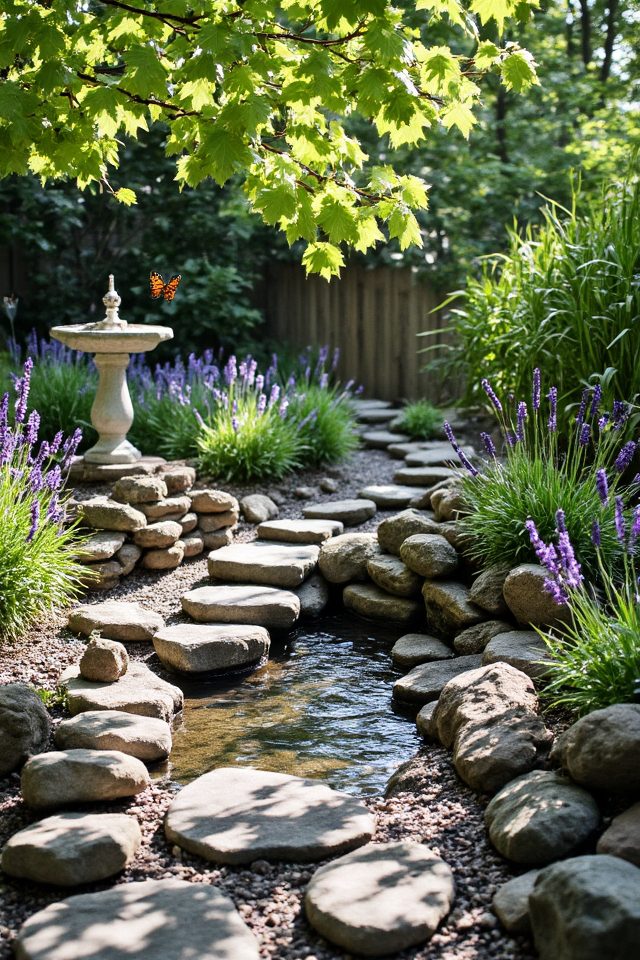
Creating a rock garden is a fantastic way to celebrate National Wildlife Day while enhancing your outdoor space.
These gardens mimic natural habitats, providing a unique environment for wildlife such as butterflies, bees, and small birds. Incorporate native plants, succulents, and strategically placed rocks to create diverse microhabitats.
Additionally, consider adding a small water feature or birdbath to attract even more wildlife, making your rock garden not just aesthetically pleasing but also a thriving sanctuary for nature.
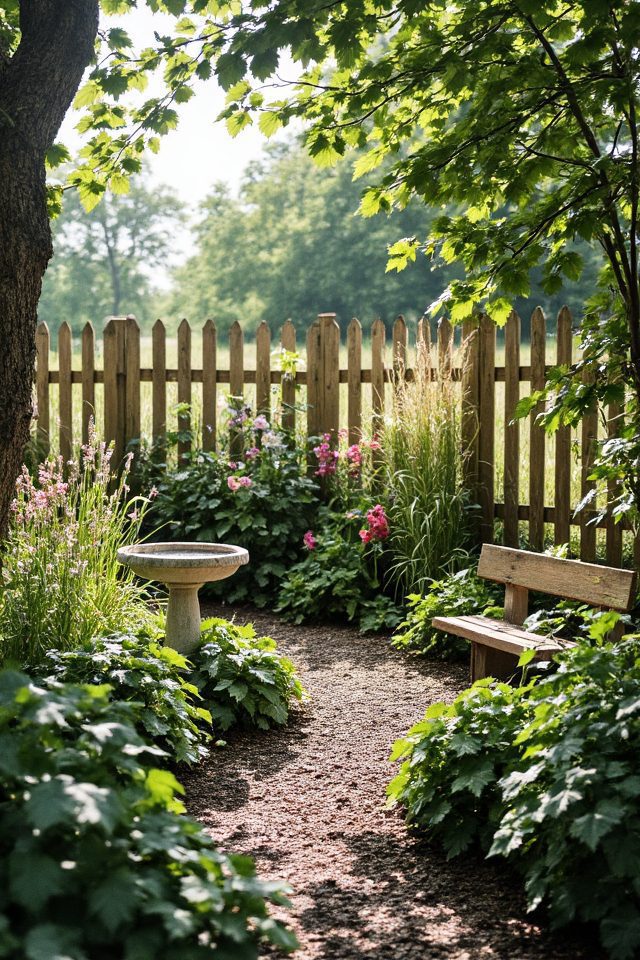
Installing wildlife-friendly fencing is an essential step in creating a garden that protects local fauna while also enhancing your outdoor space.
Unlike traditional fences, wildlife-friendly options, such as woven wire or picket styles, allow small animals to pass through safely. These fences can help keep out larger pests without restricting the movement of beneficial species.
Incorporating gaps or openings at the base encourages wildlife to visit your garden, promoting biodiversity and ensuring your garden thrives naturally.
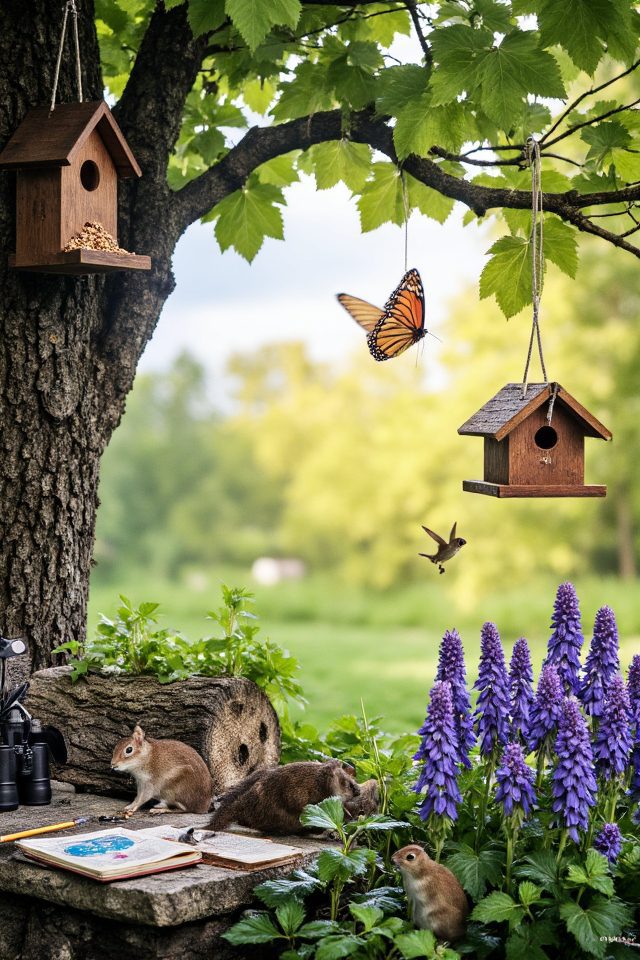
Observing and documenting wildlife visitors in your garden can be a rewarding experience that fosters a deeper connection with nature.
Set up bird feeders, bat houses, or butterfly gardens to attract various species.
Keep a journal to note the different animals and insects that visit, their behaviors, and seasonal changes.
By embracing these 17 garden ideas, you’re not just beautifying your space; you’re crafting a vibrant sanctuary for wildlife. Each native flower, fluttering butterfly, and chirping bird enriches your garden’s tapestry, creating a dance of life right outside your door. As you nurture this habitat, you’ll witness nature’s wonders unfold, deepening your connection to the earth. Celebrate National Wildlife Day not only as a day of awareness but as a beginning—a journey toward a harmonious coexistence with wildlife.

Don't let aphids, slugs, and caterpillars ruin another plant. Take back control with simple, natural methods that actually work.